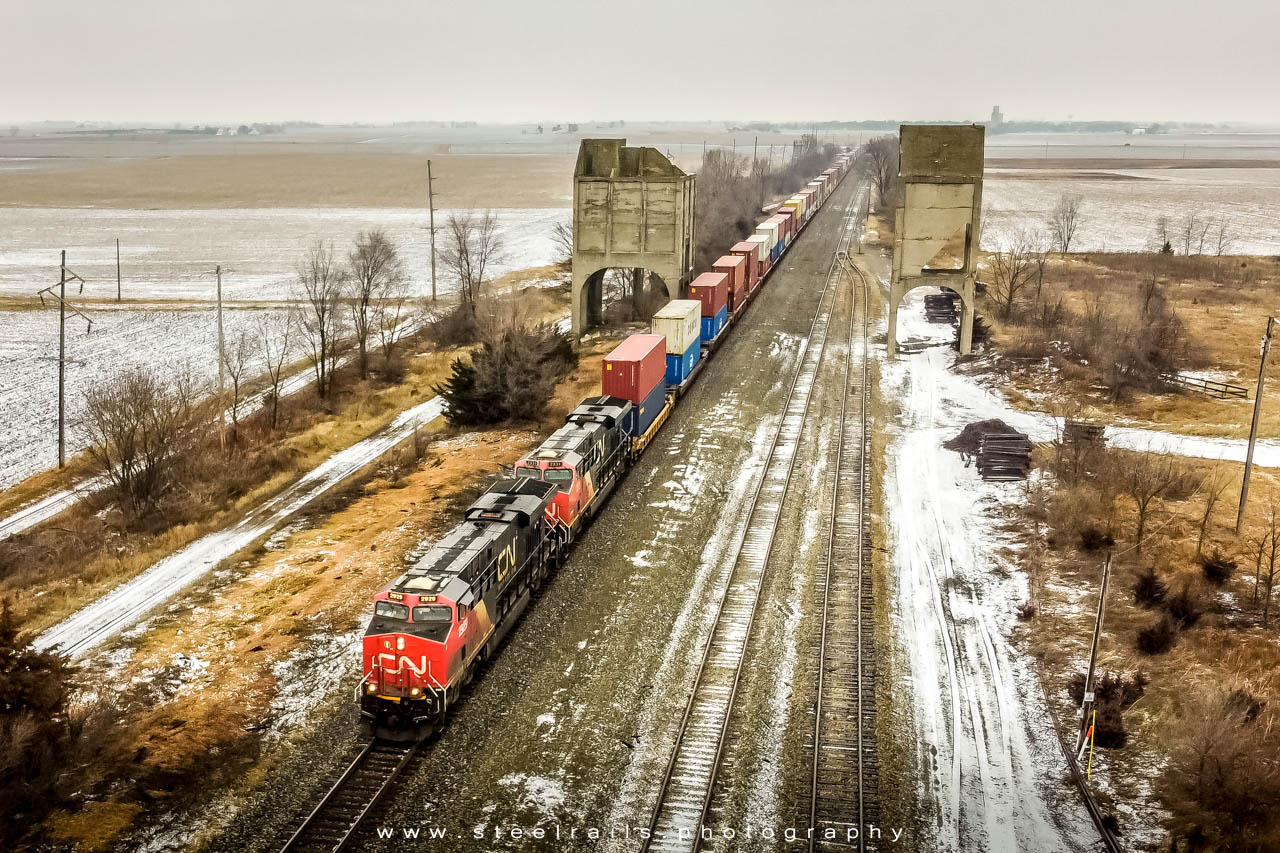Canadian National CN 2929 GE ES44AC with a stack train out of Chicago on the CN Chicago Subdivision passing by the old Illinois Central coaling tower in Gilman, Illinois on January 16, 2021.
Author: Ryan Scott
-
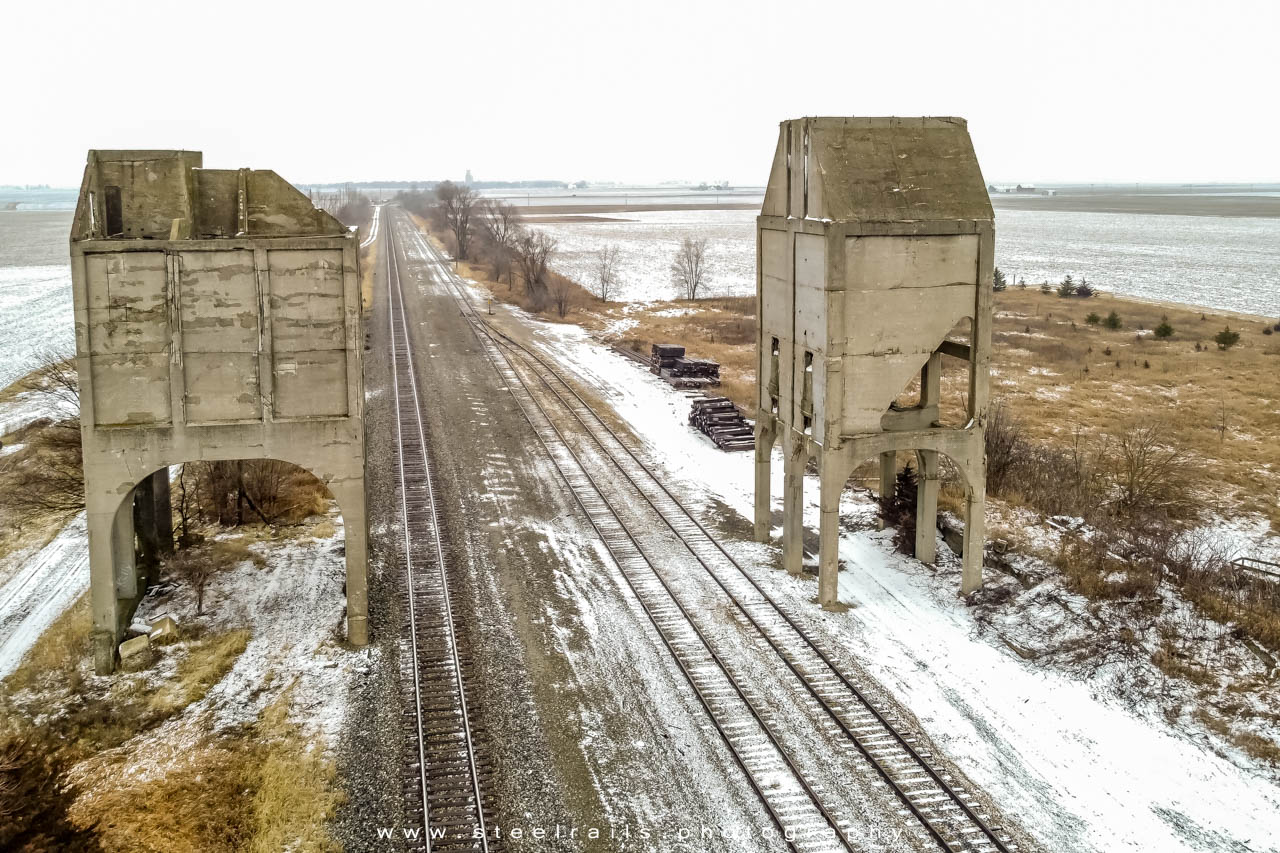
Canadian National Chicago Subdivision
Canadian National Chicago Subdivision coaling tower in Gilman, Illinois on January 16, 2021.
-
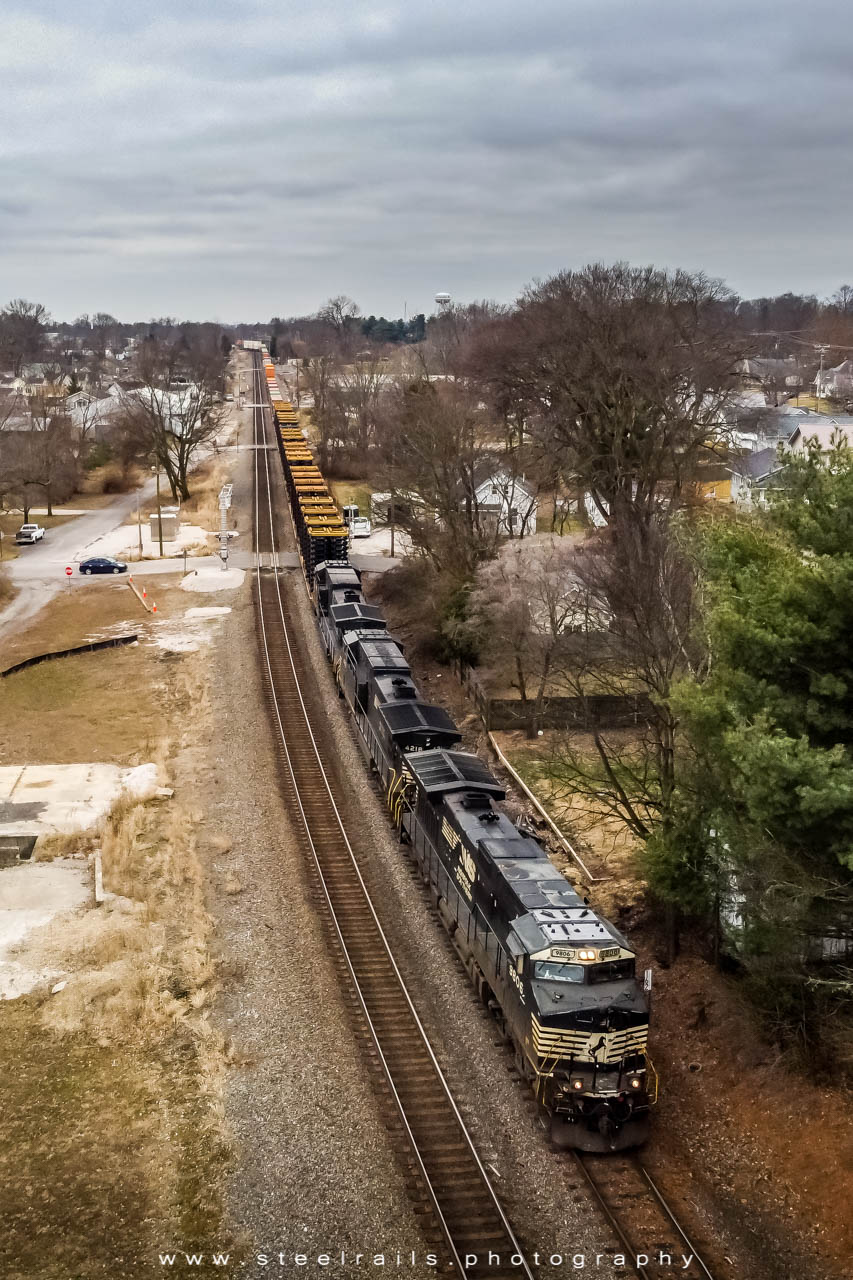
NS 9806 GE C40-9W
Norfolk Southern NS 9806 GE C40-9W leading NS-224 through Princeton, Indiana on January 9, 2021.
-

NS 7675 GE ES40DC
Norfolk Southern NS 7675 GE ES40DC, NS ID-167 leads a mixed freight east passing NS ID-224 at Wright in an area know as Lyles Station in Princeton, Indiana on January 9, 2021.
Lyles or Lyles Station is an unincorporated community in Patoka Township, Gibson County, Indiana. The community dates from 1849, although its early settlers first arrived in the 1830s, and it was formally named Lyles Station in 1886 to honor Joshua Lyles, a free African American who migrated with his family from Tennessee to Indiana around 1837. Lyles Station is one of Indiana’s early black rural settlements and the only one remaining. The rural settlement reached its peak in the years between 1880 and 1912 when major structures in the community included the railroad depot, a post office, a lumber mill, two general stores, two churches, and a school. By the turn of the twentieth century, Lyles Station had fifty-five homes, with a population of more than 800 people. The farming community never fully recovered from the Great Flood of 1913, which destroyed much of the town. Most of its residents left for economic reasons, seeking opportunities for higher-paying jobs and additional education in larger cities. By 1997 approximately fifteen families remained at Lyles Station, nearly all of them descended from the original settlers.
-
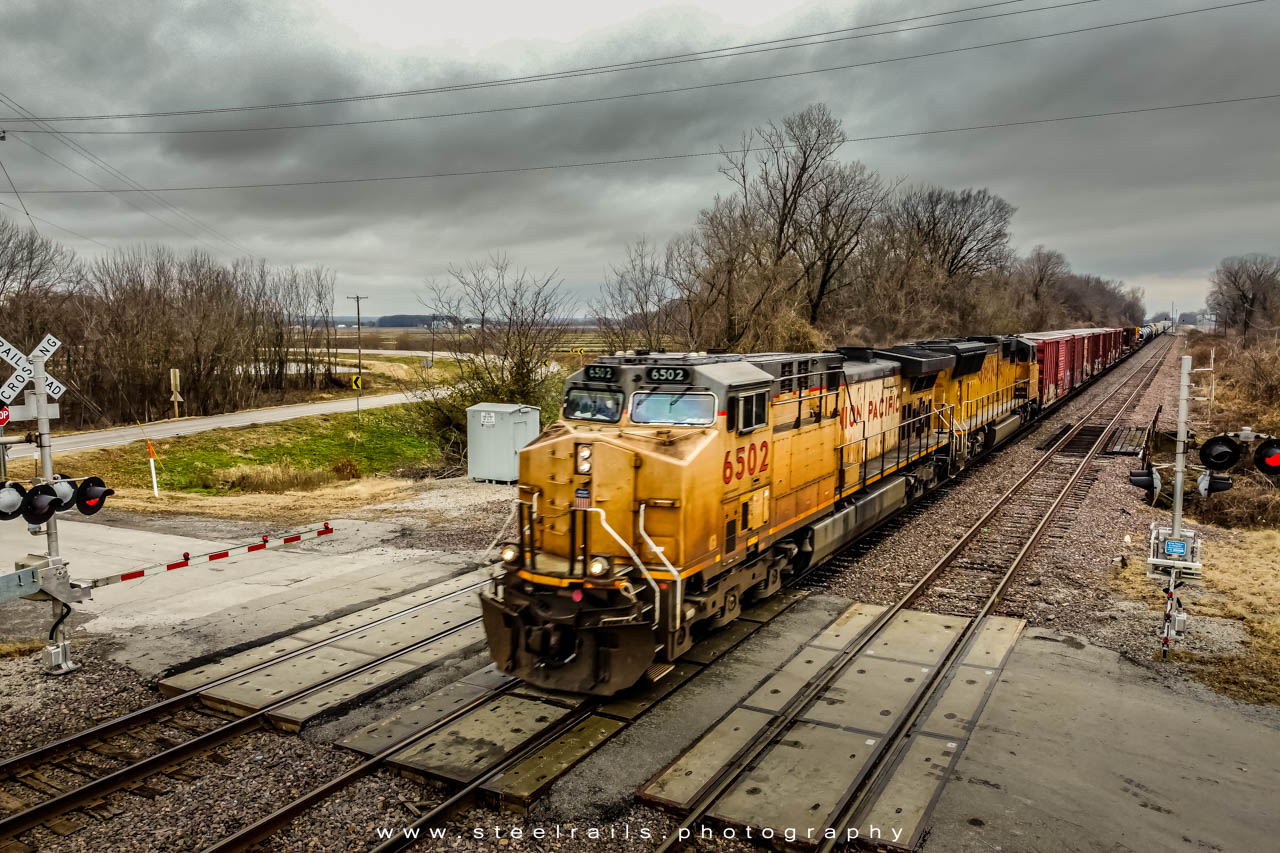
UP 6502 GE AC44CW
Union Pacific UP 6502 GE AC44CW leads a northbound Manifest Train on the Chester subdivision through Gorham, Illinois on January 2, 2021.
The Chester Sub is Union Pacific’s water level route through southern Illinois. This is the former Missouri Pacific line between Chester and Thebes, Illinois.
-
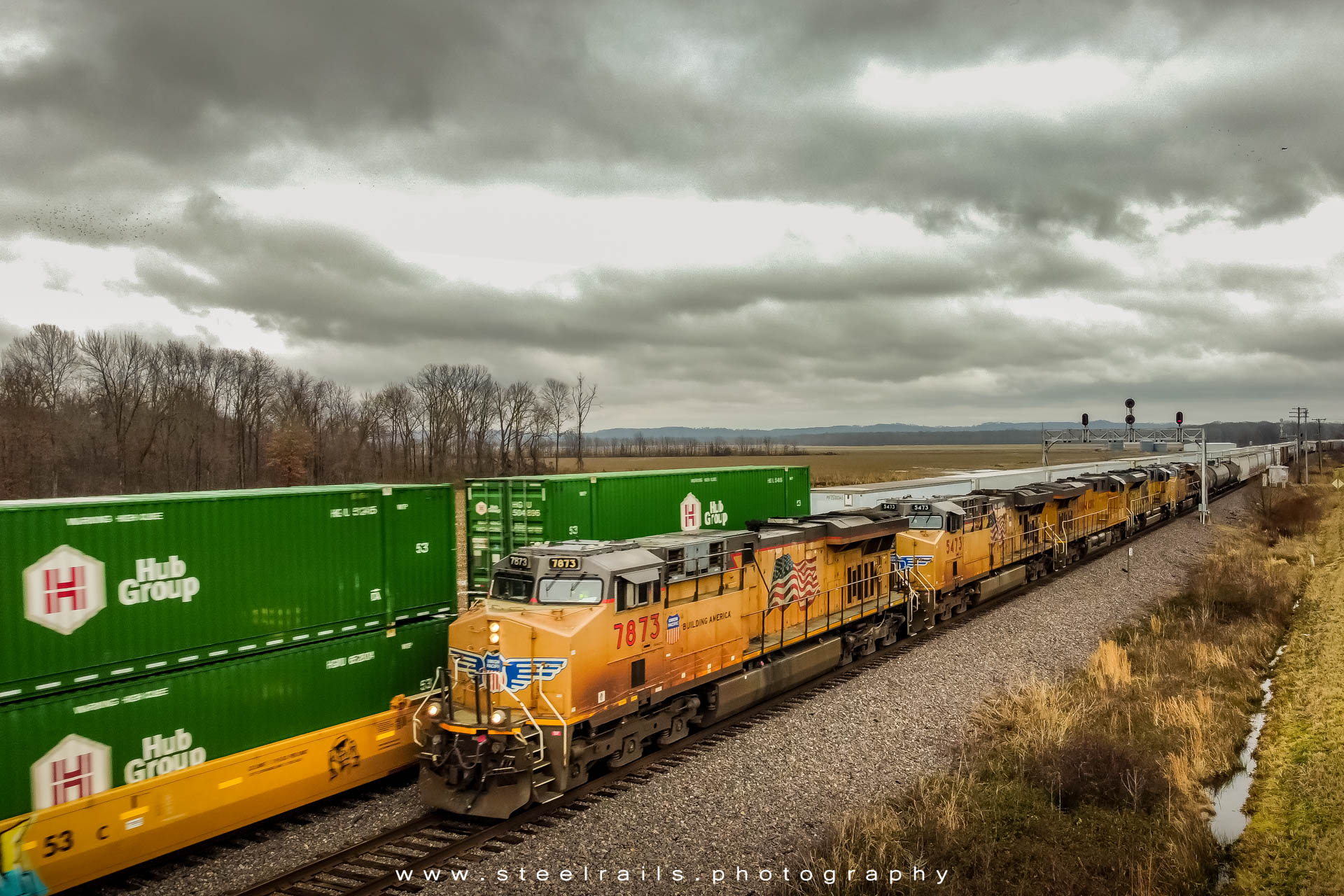
UP 7873 GE AC45CCTE
Union Pacific UP 7873 GE AC45CCTE leads a northbound Manifest Train through Gorham, Illinois on January 2, 2021.
AC45CCTE is the name often used by Union Pacific GEVO units, mainly because of the fact that they have slightly more tractive effort due to management software.
-
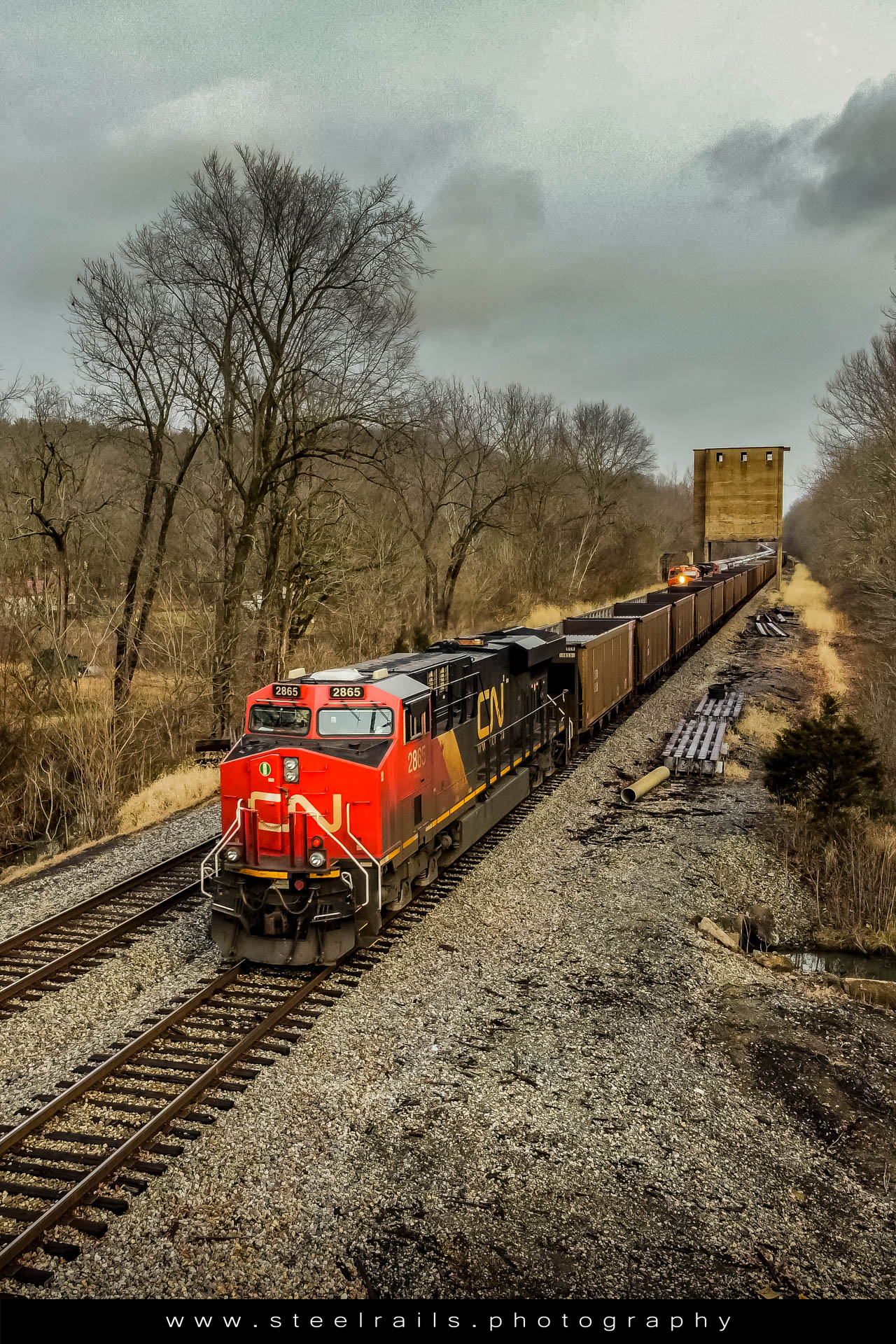
CN 2865 GE ES44AC
Canadian National CN 2865 GE ES44AC DPU power to an empty CN coal train is northbound as it passes a loaded BNSF grain train under the old Illinois Central coaling tower in Reevesville, Illinois on January 2, 2021.
Distributed power (DP) (unit U) is a generic term referring to the physical distribution—at intermediate points throughout the length of a train—of separate motive power groups. Such ‘groups’ may be single units or multiple consists and are remotely controlled from the leading locomotive. The practice allows locomotives to be placed anywhere within the length of a train when standard multiple-unit (MU) operation is impossible or impractical. DP can be achieved by wireless (RF connectivity) or wired (trainlined) means. Wired systems now provided by various suppliers use the cabling already extant throughout an ECP train.
-
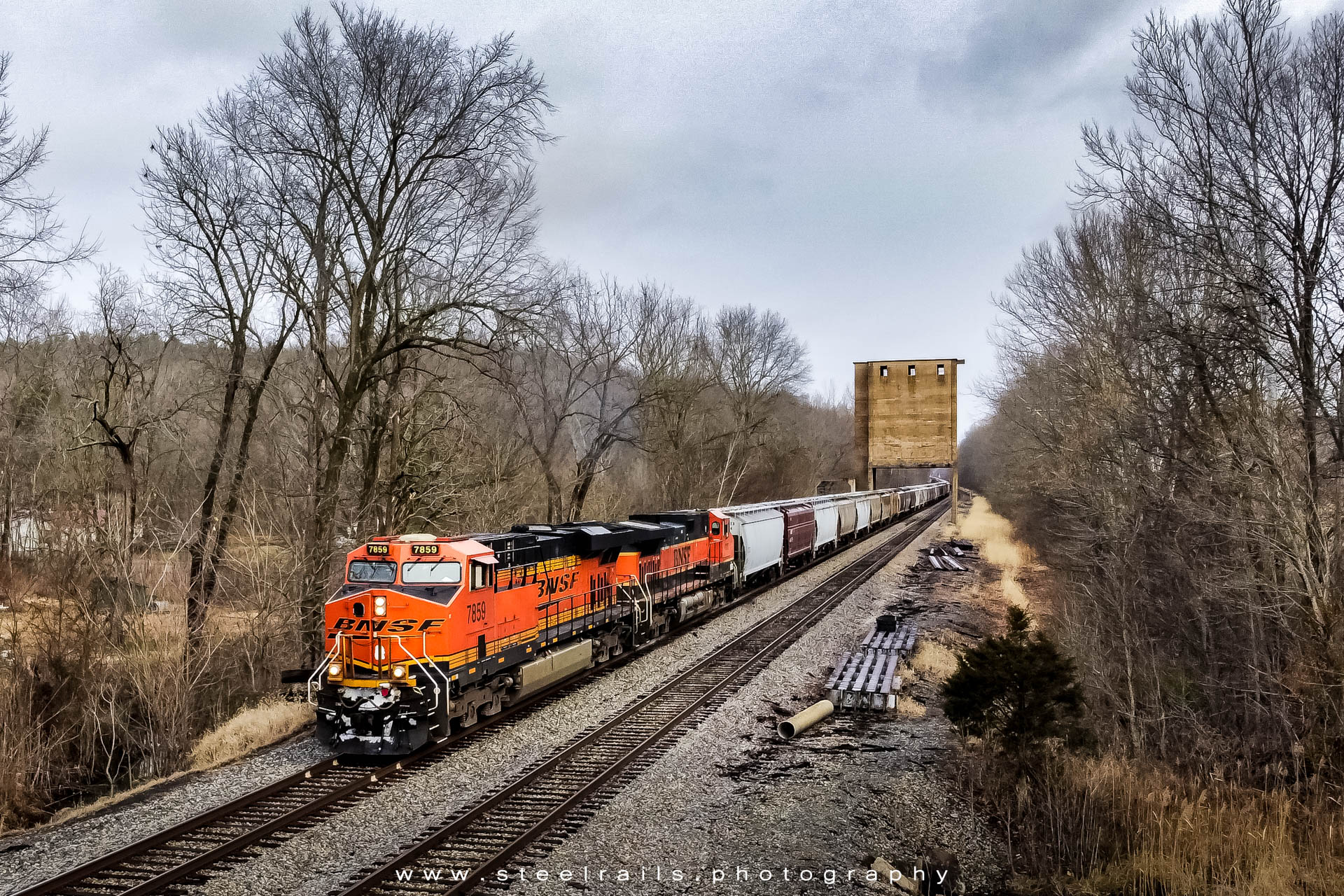
BNSF 7859 GE ES44DC
Burlington Northern Santa Fe BNSF 7859 GE ES44DC leading a grain train on the CN Centralia subdivision passing under the old Illinois Central coaling tower in Reevesville, Illinois on January 2, 2021.
Coaling towers were constructed of wood, steel-reinforced concrete, or steel. In almost all cases coaling stations used a gravity-fed method, with one or more large storage bunkers for the coal elevated on columns above the railroad tracks, from which the coal could be released to slide down a chute into the waiting steam locomotive’s coal storage area. The method of lifting the bulk coal into the storage bin varied. The coal usually was dropped from a hopper car into a pit below tracks adjacent to the tower. From the pit a conveyor-type system used a chain of motor-driven buckets to raise the coal to the top of the tower where it would be dumped into the storage bin; a skip-hoist system lifted a single large bin for the same purpose. Some facilities lifted entire railway coal trucks or wagons. Sanding pipes were often mounted on coaling towers to allow simultaneous replenishment of a locomotive’s sandbox.
As railroads transitioned from the use of steam locomotives to the use of diesel locomotives in the 1950s the need for coaling towers ended. Many reinforced concrete towers remain in place if they do not interfere with operations due to the high cost of demolition incurred with these massive structures. From Wikipedia, the free encyclopedia
-

CSXT 5478 GE ES40DC
CSX Transportation CSXT 5478 GE ES40DC leading Q512 a mix freight past this old Chessie System Steel Bay Window Caboose that CSX use for a shoving platform thought town in Evansville, Indiana on January 1, 2021
The shoving platform may be made from a flat car or a caboose. They provide a safe platform for the crews to stand on when a train is shoved a long distance to an industry.
-

PREX 1614 EMD EMD GP16
Pioneer Railcorp PREX 1614 EMD Rebuilt EMD GP16 Indiana Southwestern Railway switching some cars at the Harwood yard in Evansville, Indiana on December 31, 2020
Indiana Southwestern Railway (reporting mark ISW) is a subsidiary of Pioneer Railcorp, operator of several short-line railroad companies. The ISW is a Class III railroad, and operated on 17 miles of track from Evansville, Indiana, northward to Cynthiana, Indiana. That track is currently out of service but switching still occurs in ISW’s yard and surrounding industries.
The line was originally operated as part of an Illinois Central Railroad line that ran all the way to Newton, Illinois. Illinois Central sold off the line south of Browns, Illinois, to Indiana Hi-Rail Corporation; the line went through a succession of operators, all of which had to contend with the line’s ancient bridge over the Wabash River near Grayville, Illinois. The bridge suffered damage from floods on more than one occasion, and one span finally collapsed completely around 1999.
Pioneer bought the line and its Evansville shops in 2000 from the Evansville Terminal Railway. However, when Pioneer stopped shipping grain, the track had to be dismantled and salvaged at the close of 2011. Only the small stretch from the interchange northwest of Evansville to just north of their yard is still used, a distance of about 4 miles.
The dates back to 1881 as part of the Evansville and Peoria Railroad, which then became part of the Peoria, Decatur & Evansville Railway through a series of purchases. The PD&E became part of Illinois Central in 1900. The ISW is currently the only remaining in-service segment of the PD&E south of Mattoon, Illinois. From Wikipedia, the free encyclopedia.
